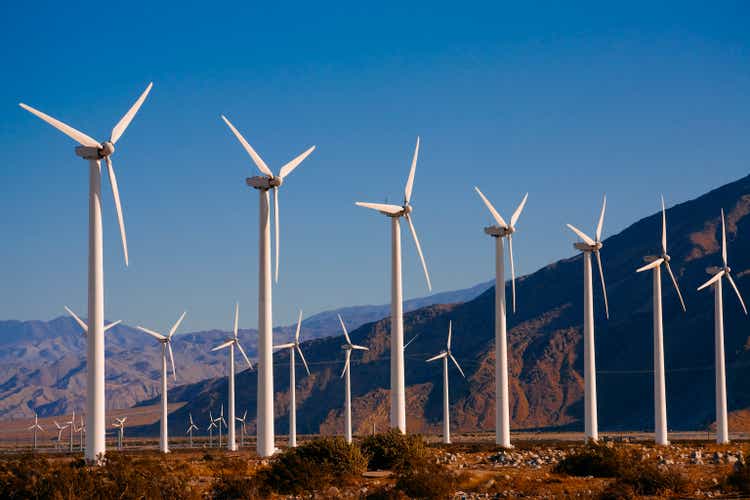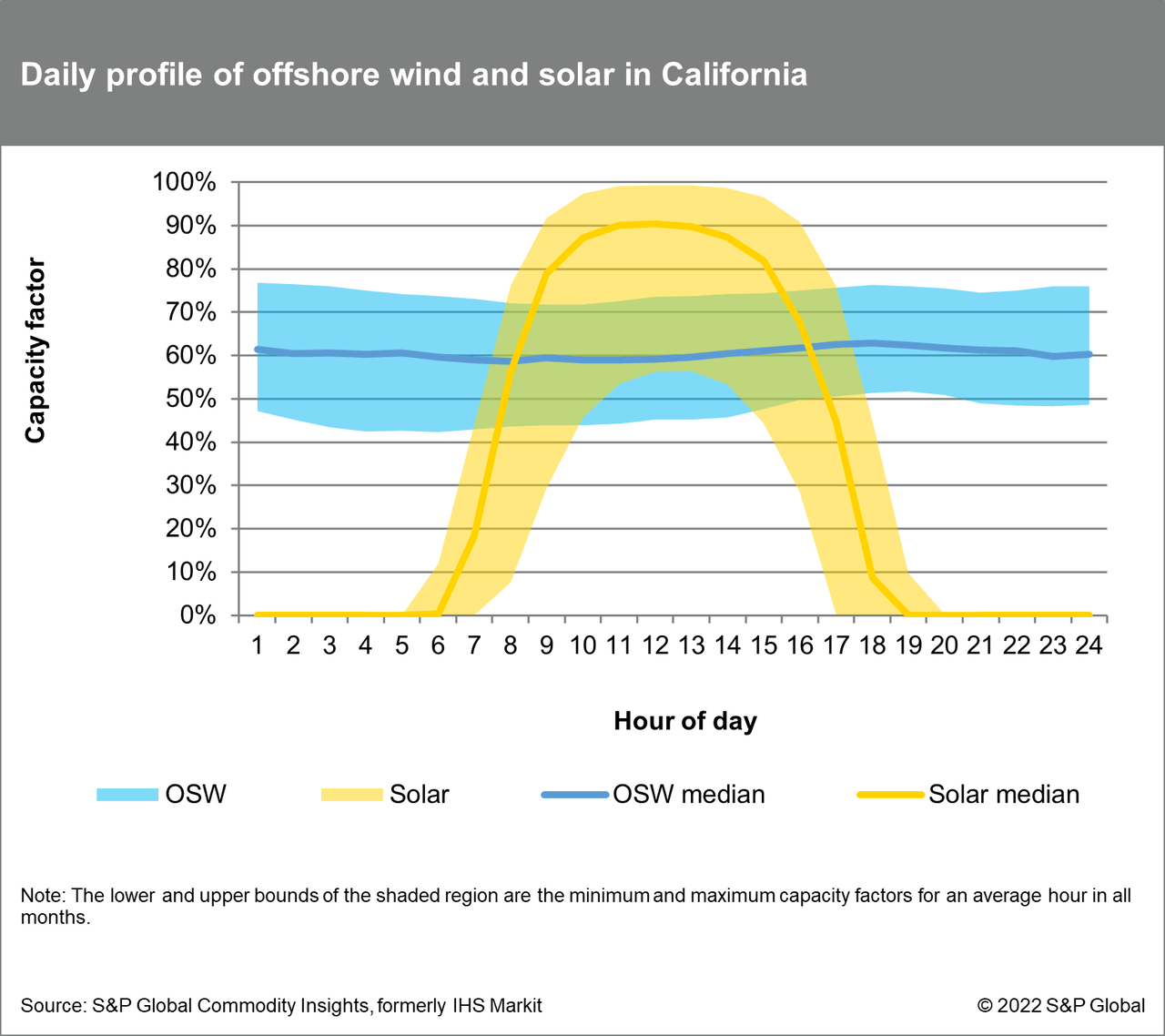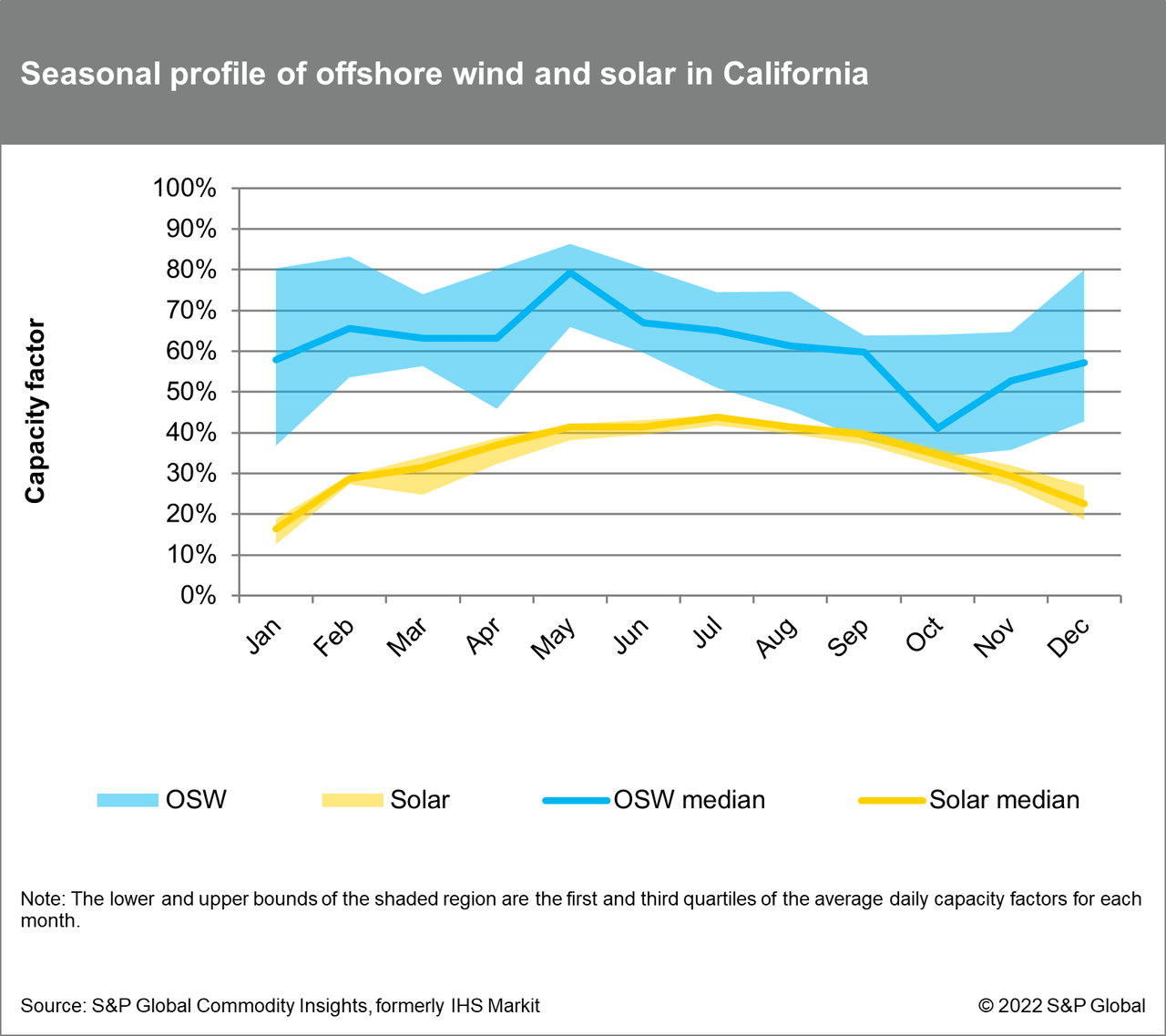Ron and Patty Thomas
In early December, the US Department of Interior will hold a lease auction for five wind energy areas off California’s coast, a material step toward the California’s Energy Commission’s recently announced target of installing 2-5 GW of offshore wind by 2030.
Unlike the east coast with its relatively shallow depths, the continental shelf off California plunges quickly, meaning any offshore wind farms would have to rely on floating turbines—a relatively nascent technology with a more uncertain cost trajectory relative to its fixed-bottom counterpart. Recognizing the need for further technology development, the Biden administration announced a floating offshore wind initiative in September, targeting steep cost declines.
With all the recent news and interest in floating offshore wind on the west coast, we decided to take a closer look at the role the technology could play in California’s power supply portfolio. Using our production cost model, we modeled several scenarios where we swapped out portfolios of solar and batteries—the backbone of California’s decarbonization strategy—for portfolios with offshore wind that provide equivalent levels of energy and reliability.
We find that adding offshore wind to California’s generating portfolio is generally expensive but provides system benefits outside of strict economics. Whereas solar peaks during the summer months and only generates when the sun is shining, offshore wind generates more consistently on average (see Figures 1 and 2).
The resources’ complementary generating profiles take pressure off dispatchable resources such as the gas and battery fleets by reducing net load volatility. Less fluctuation in net load makes it easier for these resources to fill in the gaps in renewable production. Indeed, the gas fleet ramps less dramatically when offshore wind is a part of the generating mix compared to portfolios with no offshore wind.
Additionally, offshore wind’s impact on gas burn varies by season; substituting offshore wind for solar and batteries reduces gas fleet capacity factors in the winter months but increases them in the summer and fall.
Figure 1 Figure 2

On the economic side, achieving Biden’s LCOE target of $45/MWh would certainly make floating OSW more attractive to California; at the current LCOE of $143/MWh, we find offshore wind would be an expensive swap for equivalent levels of solar and batteries.
However, our analysis is sensitive to capital cost trajectories given the magnitude of offshore wind fixed costs vs. production cost savings; hitting the $45/MWh LCOE target would be the economic boost that offshore wind needs to carve out a space in California’s generating portfolio alongside solar and storage.
Overall, a generating portfolio with offshore wind supports a more daily and seasonally robust power system and eases the gas fleet’s ramping responsibilities, but we find that the question of whether floating offshore wind is a good deal for California in a strict economic sense largely hinges on how far the industry can drive down costs.
Editor’s Note: The summary bullets for this article were chosen by Seeking Alpha editors.


Be the first to comment